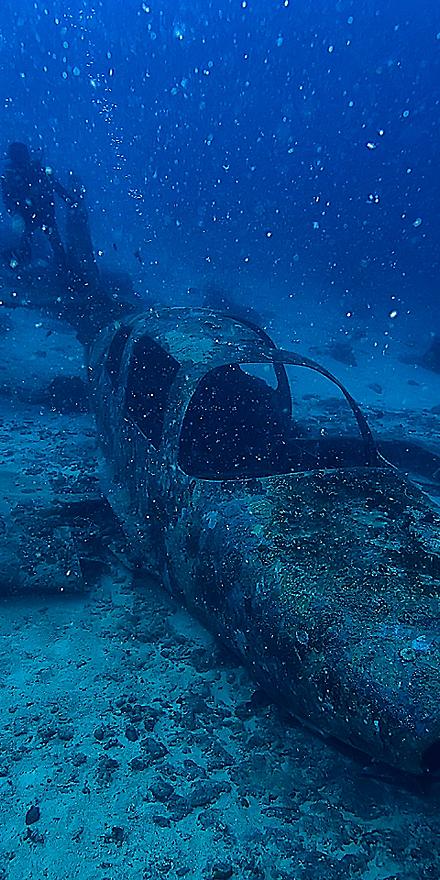Florida will not be entirely underwater in 2025. Predictions indicate that significant portions will remain above sea level.
Florida’s coastline faces increasing threats from rising sea levels and climate change, with predictions of noticeable impacts in the coming decades. As a low-lying state, Florida is particularly vulnerable to the consequences of sea-level rise. Coastal cities have begun to experience more frequent flooding during high tides and storms, an issue that’s projected to worsen over time.
Sustainability and resilience projects are underway to mitigate these risks. Homeowners and policymakers alike are taking the threat seriously, implementing measures to protect infrastructure and preserve the state’s beautiful and economically vital coastlines. The year 2025 is too soon for the entire state to be submerged, but awareness and action are essential to combat the threat of future submergence.

Credit: www.nathab.com
Climate Change And Rising Sea Levels
Climate change triggers warming temperatures across the globe. This warming is causing sea levels to rise. The idea of Florida being underwater is not a myth. Scientists predict that if sea levels continue to rise, parts of Florida could be significantly affected by 2025. Understanding this threat is crucial to protect our coastal communities.
The Science Behind Melting Ice Caps
As Earth’s temperature increases, ice caps and glaciers melt. This melting process contributes to rising sea levels. Here’s how it happens:
- Polar regions get warmer.
- Ice sheets in Greenland and Antarctica start to melt.
- Melted ice flows into oceans.
- Sea levels rise, threatening coastal areas.
These changes are documented by satellites. Data from these observations help predict future sea level rise.
How Oceans Expand As They Warm
Besides melting ice caps, oceans get larger naturally as they warm. This is thermal expansion. Here’s a simple breakdown:
- Water heats up due to climate change.
- Warm water takes up more space than cold.
- Oceans expand and sea levels rise.
Florida’s coast is especially vulnerable to this. Research shows that even a small increase can have big impacts.

Credit: www.royalcaribbean.com
Florida’s Vulnerability To Flooding
Florida’s landscape sets the stage for its flooding risks. Low-lying areas and proximity to the ocean increase its exposure. Factors such as rising sea levels and extreme weather events add uncertainty. Understanding Florida’s flood risk includes looking at geography, topography, and historical flood patterns.
Geography And Topography Factors
Florida’s geography and topography are key to understanding its flood risks. Below are significant factors:
- Flat Terrain: Much of Florida is flat, which means water does not drain away quickly.
- Coastal Location: With over 1,350 miles of coastline, Florida faces flooding from both heavy rains and storm surges.
- Elevation: Low elevations across the state put many areas at risk for even minor sea-level rises.
- Peninsula Shape: Surrounded by water on three sides, Florida’s peninsula shape makes it vulnerable to flooding from multiple directions.
Historical Data On Florida’s Floods
Floods are not new to Florida. Historical data shows a pattern of significant flooding events:
| Year | Event | Impact |
|---|---|---|
| 1992 | Hurricane Andrew | Massive storm surge and flooding |
| 2005 | Hurricane Katrina | Widespread flooding and devastation |
| 2017 | Hurricane Irma | Extensive flood damage statewide |
| 2022 | Hurricane Ian | Catastrophic flooding across Florida |
These events highlight Florida’s ongoing battle with flooding. Projections for 2025 suggest Florida’s flood risk remains high.
Predictive Models For 2025
Questions buzz around Florida’s future, with 2025 just a blink away. Will vibrant beaches vanish beneath the waves? Predictive models for 2025 paint a picture, but it’s a complex mosaic with varying outcomes. Let’s strap in and explore the revelations of science, as we dissect the projections and the uncertainties that sculpt them.
Recent Projections For Sea Level Rise
Science gives us a glimpse into tomorrow. Their tools? Cutting-edge tech and years of data. Recent studies flash a warning: sea levels could inch up enough to nibble at Florida’s coasts. But just how much?
- Minor increases may only dampen the shore.
- Higher climbs could redraw the map.
Tables drawing from the National Oceanic and Atmospheric Administration (NOAA) and the Intergovernmental Panel on Climate Change (IPCC) lay out these scenarios:
| Year | Expected Sea Level Rise (inches) |
|---|---|
| 2025 | 2 to 4 |
While these numbers might seem small, they carry big impacts for coastal dwellers. Florida, mostly at sea level, feels these changes deeply.
Uncertainties In Climate Modeling
Yet, forecasting is no crystal ball. Each model is a web of suppositions, packed with ifs and maybes. Climate systems are fussy, reacting to countless factors. Toss in human behavior, and you’ve got a whole new level of unpredictable.
The spanner in the works comes from:
- Variable greenhouse gas emissions.
- Shifty ocean currents.
- Unclear ice sheet responses.
These elements make each forecast a “best guess” rather than an absolute certainty. Refining these guesses is an ongoing quest. Scientists are constantly upgrading their tools, trying to sharpen the image of what 2025 could hold for Florida’s shores.
Potential Impacts On Florida’s Coastal Regions
The Sunshine State’s remarkable coastline, known for its sandy beaches and bustling cities, faces a watery uncertainty. As sea levels continue to rise, the potential impacts on Florida’s coastal regions grow increasingly alarming.
Threats To Miami And Other Cities
Sea level rise poses significant risks to Florida’s cities. Areas such as Miami, with its extensive coastline, are especially vulnerable. Many neighborhoods could experience frequent flooding. This could lead to property damage, loss of housing, and disruptions in transportation systems.
Flood maps reveal areas expected to face severe impacts:
- Downtown Miami and Miami Beach
- Fort Lauderdale
- Tampa Bay surroundings
Residents might face higher insurance costs and property devaluation.
Economic activities along the coast, such as tourism, may suffer. Critical infrastructure, including roads, bridges, and sewer systems, could require expensive modifications or relocations.
Consequences For Ecosystems And Wildlife
Florida’s unique ecosystems, such as mangroves and coral reefs, serve as natural barriers against storms and erosion but are threatened by the rising sea levels.
Wildlife at risk includes:
- Sea turtles nesting on beaches
- Manatees in coastal estuaries
- Native bird species in marshes
Habitat loss could lead to a decline in biodiversity. Species unable to adapt to changing conditions may face extinction.
Saltwater intrusion into freshwater systems compromises the supply of clean drinking water. This intruding salt can also harm agricultural areas, affecting both crop yield and Florida’s economy.
Myth Vs. Reality Of A Submerged Florida
Talk of Florida sinking is everywhere. Some people say Florida will be underwater in 2025. Let’s explore facts and fiction about Florida’s future.
Analyzing Extremist Views
Extreme opinions catch attention. Some say Florida’s doom is near. This stirs worry. Yet, these views often lack scientific backing. We will sift fact from fear.
Comparing Predictions With Current Trends
It’s important to compare dire predictions with what’s happening now. Sea levels rise, but not overnight. Let’s look at what data shows about Florida’s watery fate.
- Sea level data
- Coastal erosion rates
- Climate patterns
These points help us see the real picture. We must trust science over fear. Together, we learn about Florida’s true risk of becoming a modern-day Atlantis.
Adaptation Strategies For Residents
With the rising concern about Florida’s future, residents must prepare. Climate change poses a real threat to this sun-soaked state. By 2025, water levels might not swallow cities whole, but vigilant adapting is key. Floridians need strategies to live with water, not fight it. It starts with solid groundwork at home and in the community. Let’s explore ways to keep Florida thriving amidst environmental challenges.
Infrastructure Improvements
Stronger levees, sea walls, and pump stations stand between homes and high tides. These barriers buy time against rising waters. Improvements include:
- Elevation of coastal buildings
- Waterproofing of vital utilities
- Creation of green spaces that absorb floodwaters
Better roads facilitate quick evacuations. Stronger bridges combat storm surges. Smart planning today saves tomorrow.
Community Preparedness Plans
Communities across Florida must unite. Local preparedness blueprints promise safer futures. A ready Florida means:
- Regular disaster drills
- Evacuation maps in every home
- Supply kits full of essentials
Families should discuss escape routes. Keep important documents above potential water levels. Know local shelters. Strong ties between neighbors ensure no one faces floods alone.
Government And Policy Response
The topic of Florida potentially being underwater in the near future prompts an important discussion about the response from governments and policymakers. The complexity of climate change requires robust government strategies. These strategies target the mitigation of and adaptation to rising sea levels and other related consequences.
Federal And State Initiatives
Recent years have seen renewed urgency in addressing the threat of climate change, particularly in Florida’s case. Initiatives spearheaded by federal and state governments attempt to slow down the progression. These initiatives range from infrastructure enhancements to sustainable coastal management. Here is a snapshot of the key measures:
- Federal funding for flood defense mechanisms to protect key urban zones.
- State-led projects enhancing natural barriers such as mangroves to dampen storm surge effects.
- Incentive programs for green construction practices to reduce carbon footprint.
- Risk assessment exercises across vulnerable Floridian coastlines.
Role Of International Agreements
Florida’s fight against rising sea levels isn’t isolated; it’s part of a global movement. International agreements have a significant role, fostering coordinated efforts to combat climate change. These agreements push for:
- Emission reduction targets that align with scientific suggestions to limit activity contributing to global warming.
- Financial grants and technological aid for regions like Florida, enabling advanced climate resilience.
- Knowledge sharing platforms to exchange successful strategies and lessons learned.
Through global partnerships, Florida’s plight is recognized and addressed in synergy with the broader international community.

Credit: johnenglander.net
What The Future Holds Beyond 2025
The sunshine state of Florida faces a watery predicament as the year 2025 approaches. The future beyond this point holds significant challenges. Sea levels are on the rise, and Florida’s coastline is in a vulnerable position. Let’s explore what Florida’s future looks like and what can be done to mitigate these challenges.
Long-term Projections For Florida
Scientists have been studying Florida’s coastline for years. Research indicates that by 2100, significant portions of Florida could be submerged. Major cities like Miami, Tampa, and Fort Lauderdale face serious risks. In some scenarios, Florida could see more than a 6-foot rise in sea levels.
Important points to consider:
- Coastal Erosion: Beaches and barriers may disappear.
- Habitat Loss: Wildlife that depends on coastal ecosystems will suffer.
- Property Damage: Homes and businesses near the water could be lost.
Innovations In Climate Resilience
Efforts to combat the swelling seas are robust and innovative. Cities around Florida are investing in:
Infrastructure Upgrades: Sea walls and water pumps are being installed.
| Technology | Purpose | Impact |
|---|---|---|
| Flood Barriers | Protect low-lying areas. | Reduce damage during storms. |
| Elevated Structures | Keep buildings above water. | Prevent loss of property. |
| Wetland Restoration | Rebuild natural defenses. | Support biodiversity. |
Scientists and engineers are also exploring innovative living shorelines. These use natural materials. They slow erosion and provide habitat.
Technology plays a key part too. Cities use data analytics to predict flood patterns. They make smart urban planning decisions.
Frequently Asked Questions Of Will Florida Be Underwater In 2025
How Many Years Until Florida Is Completely Underwater?
Predicting Florida’s submersion is complex, with estimates ranging from decades to centuries, depending on climate action and sea-level rise variability. Exact timelines cannot be determined with current data.
Will Florida Exist In 2050?
Florida is expected to still exist in 2050, but coastal regions may face significant challenges due to rising sea levels and climate change.
What Will Happen To Florida In 50 Years?
Florida’s future in 50 years may include increased coastal erosion, more frequent and severe hurricanes, and greater economic impacts due to climate change. Raised sea levels could submerge low-lying areas, prompting migration and changes in wildlife habitats.
Was Florida Underwater Until 23 Million Years Ago?
Yes, much of Florida was submerged under sea water until about 25 million years ago, emerging during the Oligocene epoch.
Is Florida Sinking Due To Climate Change?
Florida faces increasing challenges from climate change, including sea level rise and coastal erosion, which contribute to the risk of some areas sinking over time.
Conclusion
Predicting Florida’s future isn’t simple, with diverse factors at play. Climate change presents real risks, yet 2025 may be too soon for total submersion. As we work toward sustainability, let’s prioritize awareness and action to safeguard this vibrant state against rising sea levels.
Your role in this effort counts.

